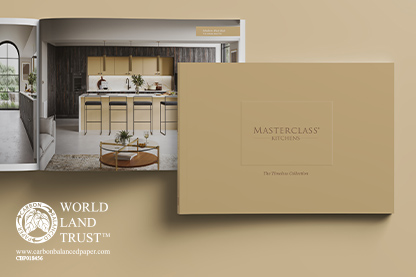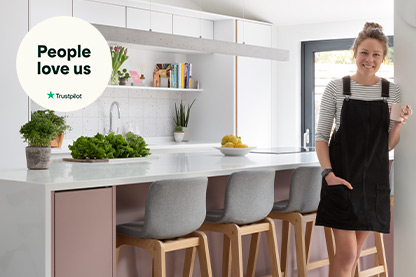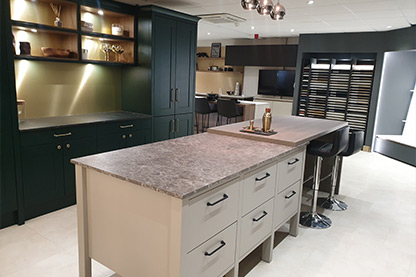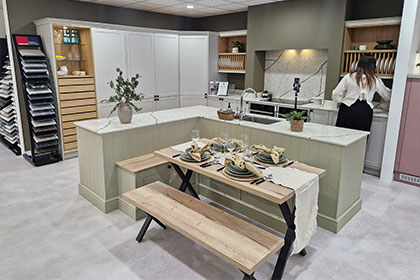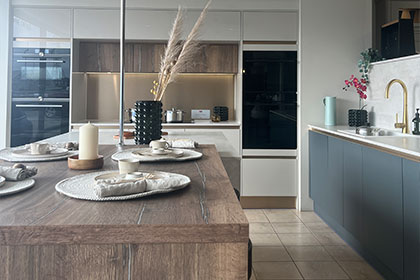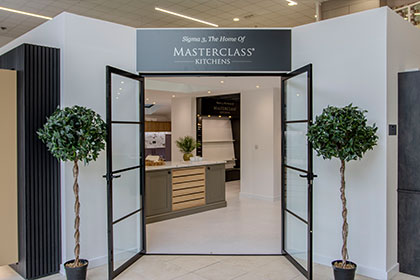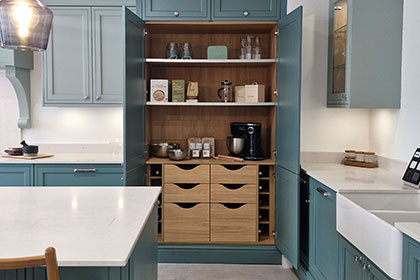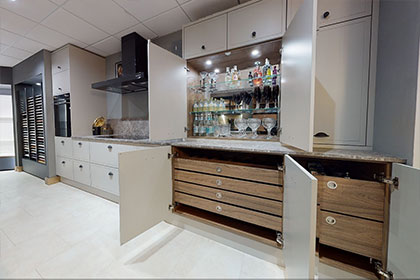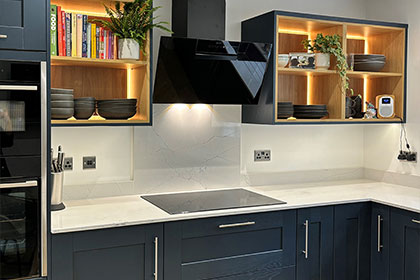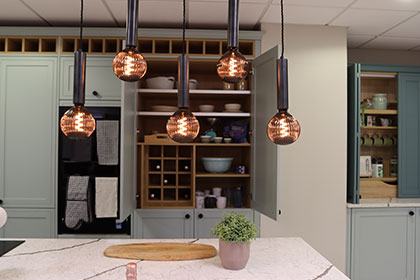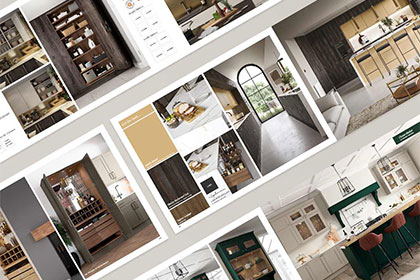The Perfect Kitchen According to Science
25 Jan 2024
Everyone obsesses over one thing or another. Maybe you’re savvy with work expenses, you conduct the weekly food shop like a pro, or you just love to count your steps to compete with the yummy mummies at yoga. We understand. After all, Instagram insists we can optimise everything (hah!).
Obviously, everything is a stretch but you can use science to design the perfect kitchen – at least, in terms of neuroscience. Indeed, neuroaesthetic researchers, who study evidence-based design, claim in a Furniture, Lighting & Decor article that good design has the “ability to improve health.” As a design pundit puts it on the Luke Edwards Interior Design blog:
“Neuro Design, when done the right way, is not a ‘trend.’”
It’s a fact: evolution is slow. What stimulates the brain now won’t change overnight. Thus, evidence-based kitchen design is guaranteed to deliver long-term appeal. At Sigma 3 Kitchens, we’ve delved deep into the findings for you. So, here it is: how to create the perfect kitchen, according to science.

Plan Kitchen Accessibility
Typical DIY designers envision rooms with a bottom-up approach, shoehorning furniture they love into spaces that weren’t designed for them. Neuroaesthetic designers, by comparison, implement a top-down approach, optimising the architecture before filling the space with furnishings that fit perfectly.


At Furniture, Lighting & Decor, for example, Jenny Pippin, a prominent US-based designer, reports focusing on accessibility – widening hallways and installing ramps in homes to accommodate for wheelchairs or baby walkers – long before even furnishing a room.
The reasoning is easy to understand: as Dr DeVelle, a principal research fellow at the Australian Council for Educational Research explains, enclosed rooms limit mobility which “can trigger a fight or flight response.” Hence, if you want to optimise a kitchen for human brain comfort, start with accessibility.
Pro Tip!
Want more design tips and lifestyle advice to help you make the most of your kitchen? Become a Sigma 3 Insider for free. You’ll get a library of virtual lifestyle guides just for subscribing.
Claim Your Welcome LibraryGrow Kitchen Plants
Once you’ve decided there is enough space for an island or other features, next you need to consider your space’s natural elements. Indeed, prioritising features like potted plants, driftwood and stonework indoors are all fundamental biophilic design practices, which we’ve covered previously.

If you missed our first post on the topic, the summary is that keeping slivers of nature indoors will leave you feeling calmer. As one designer explains in a Lookbox Living article, “It requires more energy […] to process man-made shapes […] and that’s why we find it more relaxing to look at a natural view.”
So, how about including wood worktops, stone figurines and broad-leaved plants in your kitchen? All three improve stress symptoms as long as you don’t overdo it. In case you’re wondering, 45% is the limit for wood surfaces. After that, they “start losing their stress-busting effects,” say psychology experts at the IACP.
Add Texture and Curves
Going green will only have minimal positive impact on your wellbeing if you keep your kitchen design boxy. At least, that’s the consensus from clinical trials. Indeed, they confirm; human brains love variation. As one wellbeing consultant at Bifilco Wellness Interiors explained recently in an article:
“Studies have shown that spaces with a moderate level of visual complexity, characterized by a balance between order and variety […] engage the brain without overwhelming it, leading to increased comfort.”


In essence, we’ve evolved to crave nature. We’re meant to feel spongy moss between our toes, grasp the leafy cords of willow trees and marvel at breathtaking frozen lakes, all sporting different textures. Therefore, you need to fabricate variety if you want to evoke a similar sense of serenity in your kitchen.
Consider curved Carnegie kitchen cabinets, break up uniform kitchen island sides with shelving or add a marble splashback, complete with crack lines. Maybe even think about displaying wonky vegetables on countertops, rather than opting for a cityscape of endless, rectangular packaging.
Envision Intentional Spaces
Many of us already know the reality of colour theory. However the journal Colour Research & Application confirms it: blue is calming and yellow energises us. Likewise, lots of studies agree that high ceilings incubate creativity while low ones focus our minds. Yet, we still ignore the evidence.
Why? Imagine the kind of healthy habits you could foster in yourself if you baked colour theory into your kitchen design. Want to cook with creativity and energy? Go for high ceilings and warm walls. How about keeping calm to concentrate? Use low-vaulted spots and blue furniture to your advantage.


Action the advice in this article and, in theory, you’ll craft a perfect kitchen, from a neuro-design perspective. Remember, though, while theory can form an objectively good cake recipe, it’s artistry and tastebuds that choose a winner. Thus, don’t let neuroaesthetics dictate your kitchen design. Instead, let it inform and help your creative vision to produce the perfect kitchen for you.
Consult a Kitchen Expert
Do you need help using science to create the perfect kitchen? Find your nearest showroom and book a meeting with one of our world-class consultants, or become a Sigma 3 Insider for free. As an Insider, you’ll get exclusive design tips, plus resources to help you cultivate a kitchen that’s a welcoming hub for family and friends.

